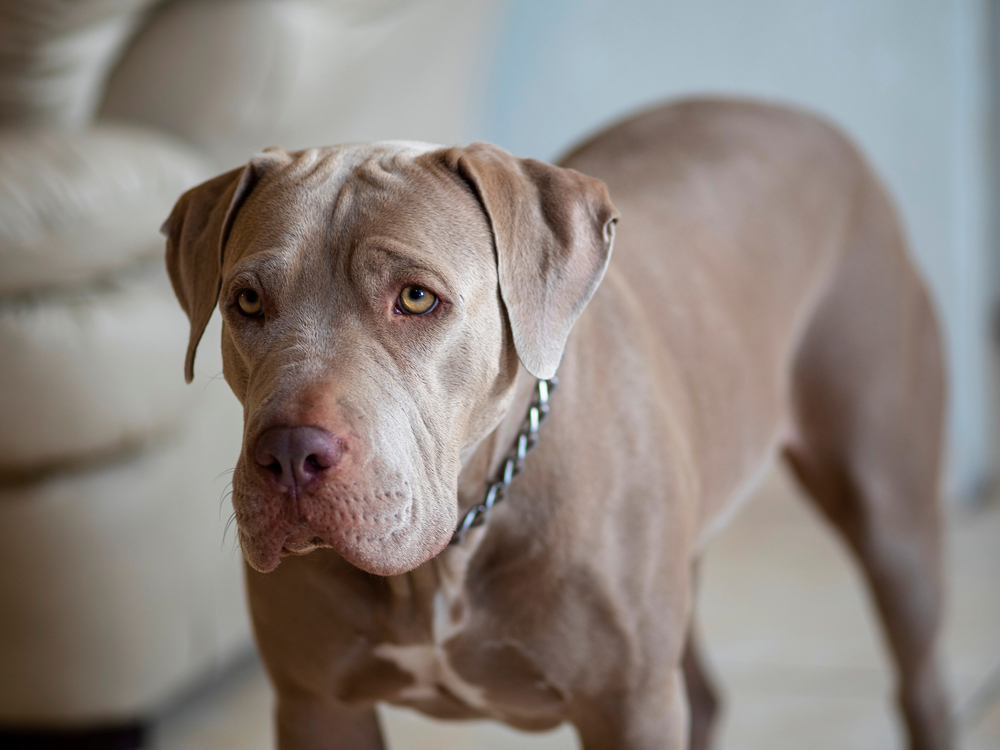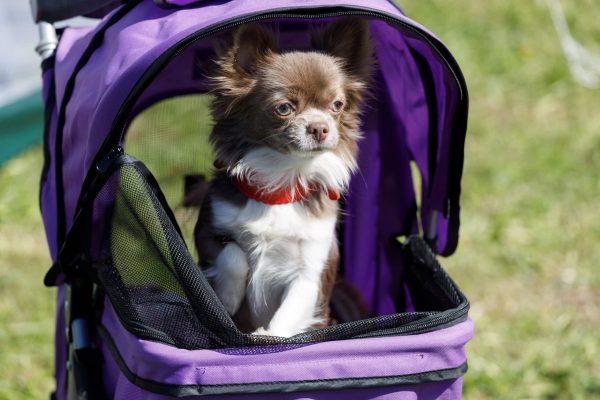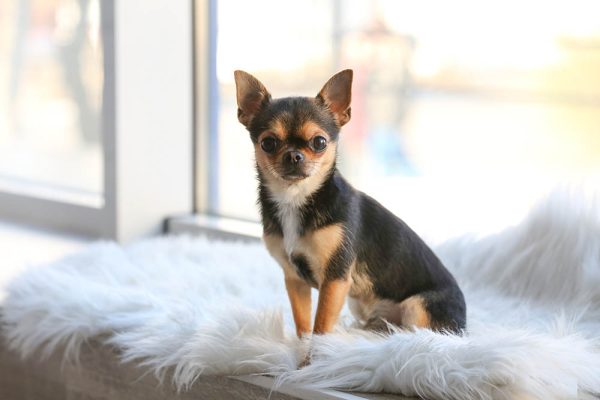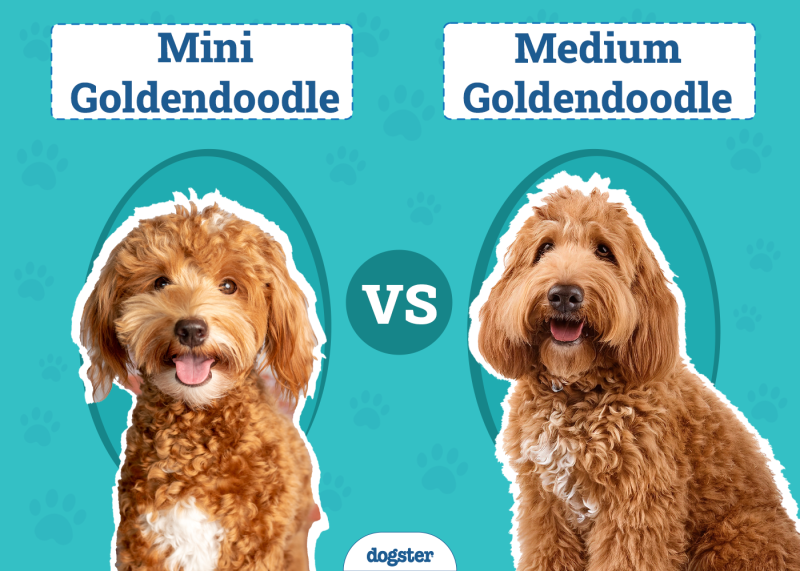In this article
View 6 More +Pitbulls are one of the most beloved and feared dog breeds in the world. They have a reputation for having aggressive tendencies, but they are also one of the most loyal and beautiful dog breeds. Pitbulls come in a wide range of sizes and colors. Among these colors, one of the most sought-after and breathtaking is Blue Fawn. Blue Fawn is a homozygous gene that leaves the Pitbull with a silvery blue coat and a red nose.
Blue Fawn Pitbulls with this color variation are not only striking to look at but they are also fiercely loyal dogs with the power to match. Let’s learn more about the Blue Fawn Pitbull so you can decide whether this is the dog best suited for you.
Breed Overview
Height:
17–19 inches
Weight:
40–75 pounds
Lifespan:
8–15 years
Colors:
Bluish silver, white, fawn
Suitable for:
Couples, singles, and families with older kids
Temperament:
Loyal & loving, intelligent, gets along with other pets
When referring to Pitbulls you aren’t speaking about a breed of dog. There are actually several dog breeds that can be referred to as Pitbull. Among these breeds are the American Staffordshire Terriers, American Pitbull Terriers, and the Staffordshire Bull Terrier. These dogs were originally bred by crossing Terriers and Bulldogs.
Unfortunately, breeders saw the power these dogs held and began using them as fighting dogs. Their stocky build and muscular bodies, along with their fighting history are why these breeds of dogs are feared by so many. If you decide to bring one of these cute puppies into your home, make sure you begin training and socializing at an early age so they can live a good life at your side.
Blue Fawn Pitbull Breed Characteristics

The Earliest Records of Blue Fawn Pitbulls in History
The Pitbull’s history can be traced back to the 1500s in England. During this time a dog called the Butcher’s Dog was commonly used for a bloodsport known as bull-baiting. By 1631, Butcher’s Dogs became known as Pitbulls. This name didn’t specify a breed. Instead, it was used to refer to the dog’s use in the sport.
Thanks to the outrage of people in England, bull-baiting was outlawed throughout the country in 1835. Bulldog breeders decided to take on a new sport, ratting. This sport puts a dog inside a pit with numerous rats. People would then wager on how many rats the dog could kill during their time in the pit.
Thanks to this new sport, the muscular Pitbulls now needed agility and a higher prey drive. This is when breeders decided to cross these dogs with terriers. The Pitbulls we know today are the result of this breeding.
Unfortunately, ratting wasn’t the only sport Pitbulls found themselves being used in. Shortly after ratting became popular, dogfighting also emerged. Both Pitbulls and dogfighting then made their way to the United States where laws have been used for years in hopes of putting a stop to dogfighting and animal abuse overall.

How Blue Fawn Pitbulls Gained Popularity
When Pitbulls found their way to America, things changed for them. Yes, dogfighting was legal until 1976, but even before it was outlawed, people were seeing just how darling these dogs were as companion animals.
They were also used as working dogs on farms to help keep away wild animals and hunt down feral livestock. While the love of Pitbulls was growing, the Blue Fawn coloration was coming along for the ride.
Formal Recognition of Blue Fawn Pitbulls
The first to recognize a Pitbull breed was The United Kennel Club in 1898. Oddly enough, this club was formed simply to give recognition to Pitbulls and to help the founder, Chauncey Bennett, create rules and regulations to keep dogfighting alive in England. When recognized by The United Kennel Club the name American Pit Bull Terrier was used.
The American Kennel Club originally turned down Pitbull breeds when they first established themselves. They wanted to stay far away from the dog fighting situation. In 1936, the AKC decided to recognize Pitbulls, including the Blue Fawn Pitbull, under the name American Staffordshire Terrier.

Top 3 Unique Facts About Blue Fawn Pitbulls
1. Blue Fawn Pitbulls Are Great with Children
Considering the reputation Pitbulls have it’s hard to imagine them being a good dog breed to have around kids. However, as it turns out, these dogs do great with children and can easily become their best friends.
The key, as we’ve mentioned already, is to begin training and socialization early in the dog’s life.
2. Petey Gave Pitbulls a Great Image
In the 1900s, the Little Rascals helped make Pitbulls be loved as a family dog breed. Petey, the dog star of both The Little Rascals and Our Gang, was a Pitbull breed.
3. Pitbulls Do Not Have Locking Jaws
One of the biggest misconceptions about Blue Fawn Pitbulls or any Bully breed is that they have locking jaws and will not let go once they bite down. This simply isn’t true. The jaws of a Blue Fawn Pitbull, or any other Pitbull, are the same as any dog, with none having locking jaws.

Does a Blue Fawn Pitbull Make a Good Pet?
This is where you will run into a lot of debate when referring to a Blue Fawn Pitbull, or any Pitbull breed for that matter. The reputation these dogs have has people around the world split when it comes to whether they are safe to own. Unfortunately, due to the potential for aggressive tendencies, it is hard to see the difference between nature and nurture for some people.
However, Blue Fawn Pitbulls are actually great pets. They get along well with children, love to play, are one of the most loyal dog breeds, and will show all family members tons of love. Like with any dog breed, start training and socialization early. The more you love your Blue Fawn Pitbull, the better they’ll be.

Summing Up
The Blue Fawn Pitbull is easily one of the most unique and beautiful colors in the Pitbull family of dog breeds. If you’re considering one of these gorgeous dogs as a new family member, you’re lucky. With the right socialization, training, and love these dogs can make great pets, amazing family members, and lifelong best friends.
Featured Image Credit: Roberto Cabrera Castro, Shutterstock



















2 Responses
We have a female Blue Fawn. She is a serious guard dog and probably would attack you if you came in the gate and she did not know you. She barks loud if she sees people at the door or out the window. She is the sweetest most loveable animal. She is very sensitive and gets her feeling hurt easily. I don't know what I would do if anything happened to her. I love her as if she were my own child. She is tan and white, 5 years old and weighs 65 lbs. She our big sweet baby and has never attacked or bitten anyone.
Hello Carol,
thank you very much for sharing with us your story about your Blue Fawn. She sounds adorable! Being protective is natural for these dogs and it is one of the ways they show love to their owners. And as long as she won't hurt anyone, everything is alright! Best wishes.